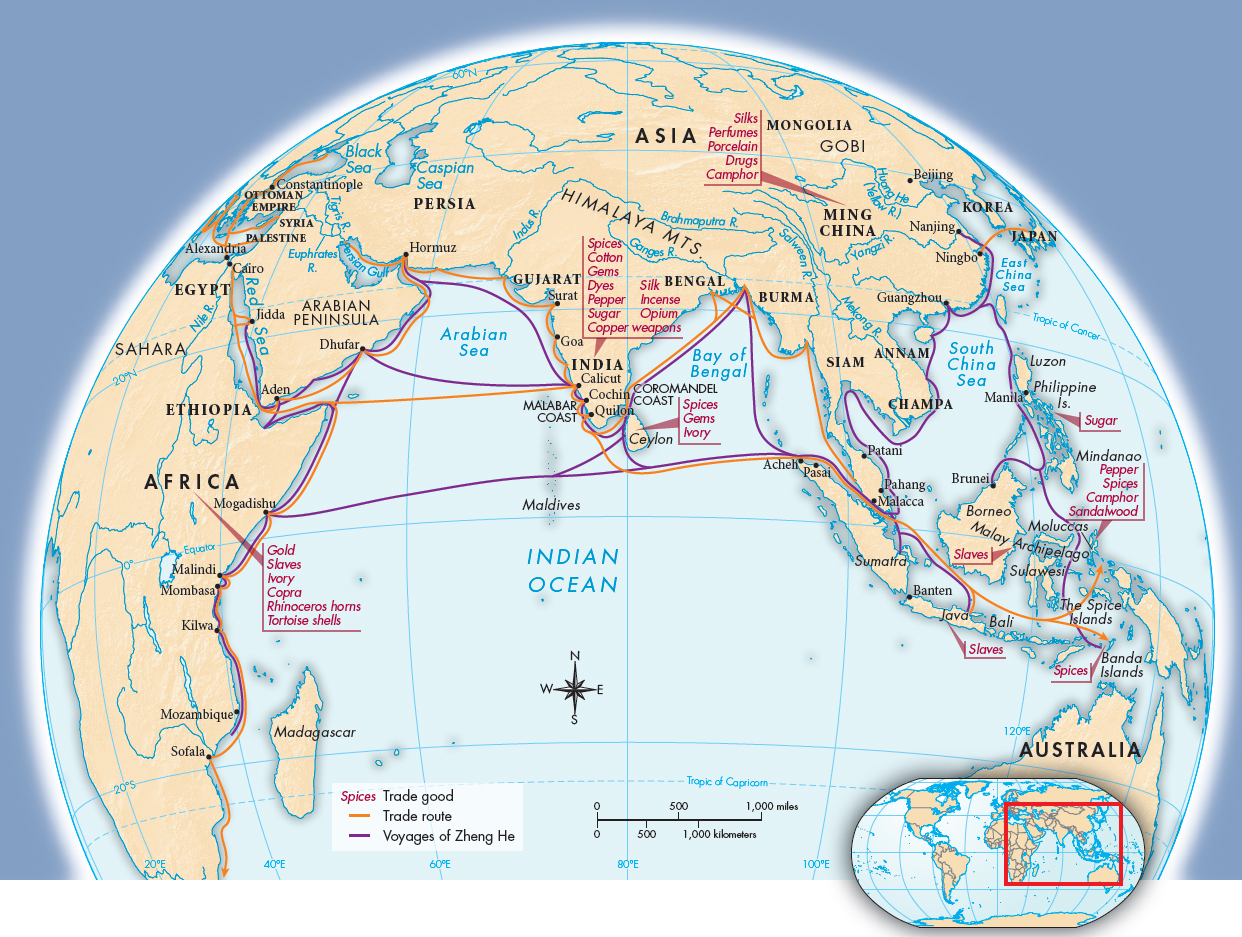Understanding World Societies:
Printed Page 456
The Trade World of the Indian Ocean
The Indian Ocean was the center of the Afroeurasian trade world, serving as a crossroads for commercial and cultural exchanges between China, India, the Middle East, Africa, and Europe (Map 16.1). From the seventh through the fourteenth centuries, the volume of this trade steadily increased, declining only during the years of the Black Death.

Merchants congregated in a series of multicultural, cosmopolitan port cities strung around the Indian Ocean. Most of these cities had some form of autonomous self-
The Mongol emperors opened the doors of China to the West, encouraging Europeans like the Venetian trader and explorer Marco Polo to do business there. Marco Polo’s tales of his travels from 1271 to 1295 fueled Western fantasies about the Orient.
After the Mongols fell to the Ming Dynasty in 1368, China entered a period of agricultural and commercial expansion, population growth, and urbanization (see “What sort of state and society developed in China after the Mongols were ousted?” in Chapter 21). Historians agree that China had the most advanced economy in the world until at least the beginning of the eighteenth century.
China also took the lead in exploration, sending Admiral Zheng He’s fleet as far west as Egypt. Each of his seven expeditions from 1405 to 1433 involved hundreds of ships and tens of thousands of men (see “Zheng He’s Voyages” in Chapter 21). The purpose of the voyages was primarily diplomatic, to enhance China’s prestige and seek tribute-
China’s decision to forego large-
Another center of Indian Ocean trade was India, the crucial link between the Persian Gulf and the Southeast Asian and East Asian trade networks. The subcontinent had ancient links with its neighbors to the northwest. Trade among ports bordering the Indian Ocean was revived in the Middle Ages by Arab merchants who circumnavigated India on their way to trade in the South China Sea.
The inhabitants of India’s Coromandel coast traditionally looked to Southeast Asia, where they had ancient trading and cultural ties. Hinduism and Buddhism arrived in Southeast Asia from India during the Middle Ages, and a brisk trade between Southeast Asian and Coromandel port cities persisted from that time until the arrival of the Portuguese in the sixteenth century. India itself was an important contributor of goods to the world trading system. Most of the world’s pepper was grown in India, and Indian cotton and silk textiles were also highly prized.